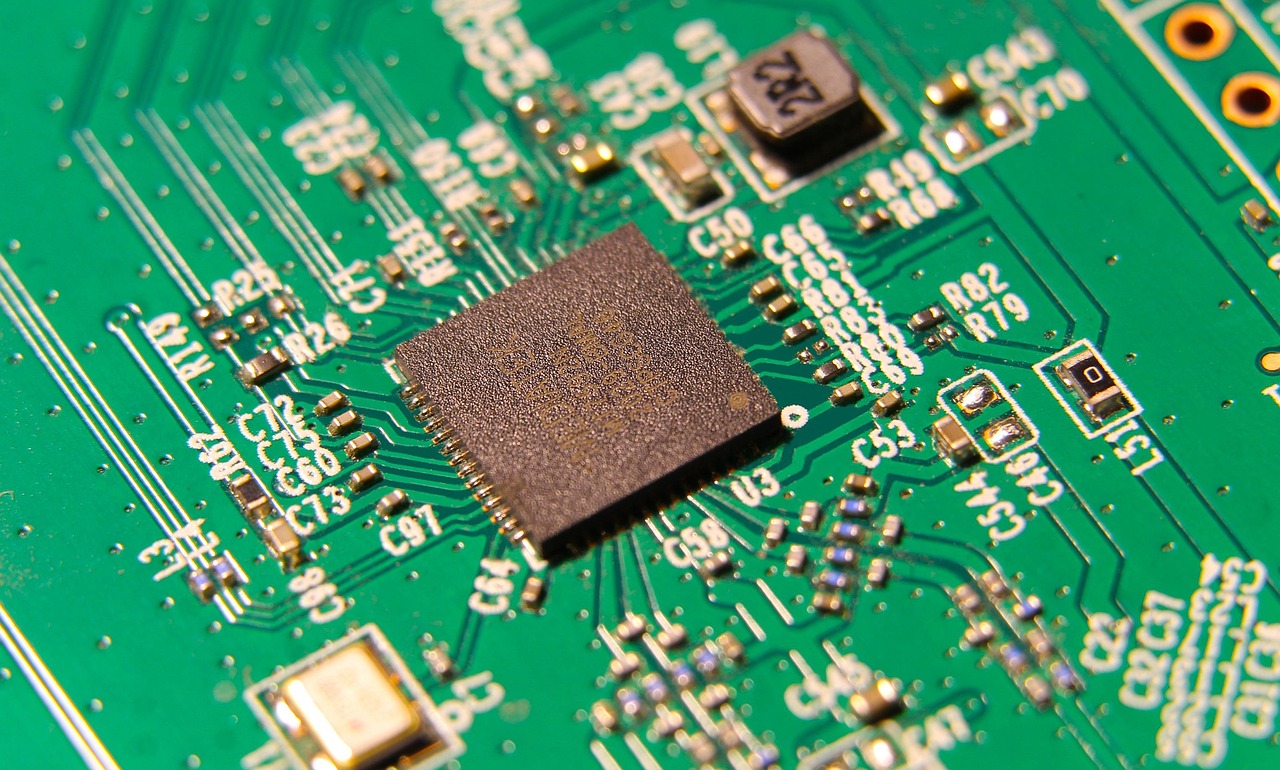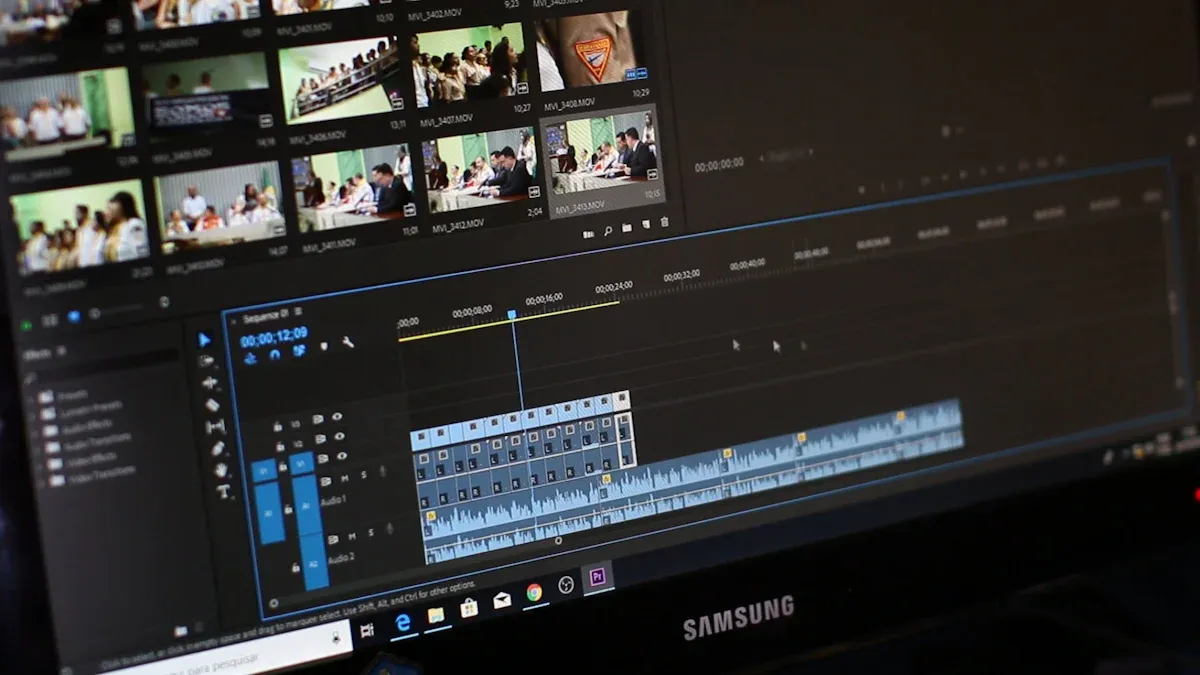
AV means audiovisual, which mixes sound and pictures for communication. You see AV technology every day in schools, offices, or events. It is becoming more important as businesses use better systems. These systems help people work together and stay involved. For example, over 70% of companies now use AV tools for hybrid work. In 2023, AV equipment made up 77% of the hardware market. This shows how important it is for modern communication. Understanding what does A V stand for helps you grasp how it changes the way we share ideas.
AV means audiovisual, mixing sound and pictures to improve communication.
More than 70% of businesses use AV for hybrid work, proving its value.
AV tools make school lessons more fun, helping students learn and remember.
AV at events makes them exciting, keeping people focused and involved.
AV systems are easy to set up, helping share ideas and work together better.
"Audio-visual" means using sound and pictures together. This technology helps people share ideas and communicate better. In the past, it included things like slide shows, movies, and TV. Now, it includes video calls, live streaming, and online videos.
Definition | Historical Usage |
|---|---|
It has changed a lot over time, helping schools, businesses, and entertainment. |
Audio-visual technology started with the phonautograph in 1857, which showed sound waves. Later, Edison’s phonograph in 1877 recorded and played sounds. These inventions led to today’s AV tools like Dolby Atmos and OLED screens.
AV tools make sharing ideas easier and more interesting. In offices, video calls and presentations help people work together. In courtrooms, AV evidence makes things clearer. By mixing sound and pictures, AV makes messages more engaging.
AV technology is very important now. Over 70% of companies use AV for hybrid work. The AV industry is growing fast, with a 12.3% yearly increase from 2023 to 2033. New tools like smart systems and immersive audio are changing how we connect and share ideas.

AV technology helps make events exciting and memorable. It mixes sound and visuals to grab attention. For example, concerts use big speakers and bright screens for amazing shows. Conferences use microphones, projectors, and live streaming to connect with people in-person and online.
Using AV tools makes events run smoothly and keeps people interested. It also helps event planners collect useful information for next time. Whether it’s a wedding, product launch, or seminar, AV ensures clear communication and great presentations. The right AV tools can turn any event into something unforgettable.
AV technology has changed how students learn in schools. Interactive screens and videos make lessons fun and easy to follow. Video calls let students talk to experts from anywhere, helping them learn more. Recorded lessons also help students review for tests.
AV tools make classrooms more exciting and interactive. Students can see and hear ideas in new ways. Virtual reality and smart tools make learning personal, while videos and sounds help students remember better. By 2027, the education tech market will grow past $285 billion, showing its importance.
Businesses use AV tools to work better and faster. Video calls help teams talk and share ideas, no matter where they are. Digital signs share news with workers or customers in a clear way.
AV also makes presentations look professional and interesting. Offices use AV setups to improve teamwork and creativity. Stores use cool displays to give customers a special experience. Across all jobs, AV tools help people create and succeed.

Audio tools are key in any AV setup. They include microphones, speakers, and amplifiers for clear sound. New systems use smart features like noise canceling and sound adjustments. These upgrades make sound better and easier to enjoy. Wireless tech, like 5G and Wi-Fi 6, has changed audio tools. It allows smooth streaming and easy connections.
In 2023, the home audio market was worth $32.69 billion. Home theaters are very popular, growing 11.5% yearly from 2024 to 2030. Audio tools are important in schools, offices, and events. They help create fun and engaging experiences.
Visual tools change how we see and enjoy content. They include projectors, screens, and video walls for sharp images. New tech like 4K and 8K makes pictures clearer and more detailed. These tools make movies, meetings, and events more exciting.
In 2023, visual tools led the AV hardware market with 77% of sales. This shows how much people want better visual tools. From business meetings to concerts, visual tools help share ideas and keep people interested.
Integrated systems combine audio and visual tools into one setup. They work together for a smooth experience. For example, a meeting room might have microphones, speakers, and screens controlled from one place. This makes them easy to use and more effective.
Real examples show how integrated systems help. Villanova University uses them for arts, and the University of Oregon uses them for sports training. These systems improve learning, teamwork, and communication in many areas.
Tip: Pick integrated systems for simple and effective AV solutions.
AV technology helps you share ideas and connect easily. By mixing sound and visuals, it makes messages simple to understand. For example, video presentations explain hard topics using pictures and sound. This makes your points stick in people’s minds. In remote work, good AV tools make communication smooth. Teams can work together without problems.
Did you know? Using AV evidence in courtrooms makes decisions more emotional and memorable.
Clear speaking and good timing also improve how people understand you. This helps your audience follow your message without confusion. Whether for events, teaching, or business talks, AV tools make communication stronger and more impressive.
AV technology grabs attention and keeps people interested. Interactive screens and cool audio-video setups make events fun and unforgettable. Studies show 93% of U.S. adults get news online, with many liking videos. This proves how engaging AV tools are.
Also, 70% of people share videos on social media, showing their popularity. With AV tools, you can make presentations that teach and entertain. This keeps your audience focused and excited about your message.
Benefit | Description |
|---|---|
Better Engagement | AV creates fun experiences that keep people interested. |
Easier to Remember | Information with AV is simpler to recall later. |
Clearer Communication | High-quality AV makes messages easy to understand. |
AV technology works well in different industries. In entertainment, it creates amazing experiences in movies, concerts, and games. In schools, interactive screens and videos help students learn better. Businesses use AV for video calls and digital signs. Hospitals use it for telemedicine and patient care.
Industry | Applications |
|---|---|
Entertainment | Cool experiences in movies, concerts, theme parks, and games. |
Education | Fun screens and videos that make learning easier. |
Business | Video calls and signs for clear communication. |
Healthcare | Telemedicine, patient care, and medical imaging. |
This flexibility makes AV tools important today. Whether planning events, teaching, or running a business, AV helps you succeed.
AV technology mixes sound and visuals for better communication. It is used in events, schools, and workplaces to make ideas clear and interesting. This technology is very useful in daily life. As it improves, AV changes how we connect, learn, and share. Tools like immersive sound and interactive screens are shaping communication's future. Knowing what AV means helps you see its importance today.
AV means audiovisual, which mixes sound and visuals. It helps make communication more exciting and clear. People use it in events, schools, and businesses to create fun and memorable experiences.
A/V stands for audio and visual parts in video meetings. It gives clear sound and sharp pictures, making online meetings easier and more interactive.
AV technology helps share ideas better by using sound and visuals. It makes messages easier to understand and more interesting in schools, offices, or events.
Businesses use microphones, speakers, projectors, and combined AV systems. These tools help with video calls, presentations, and digital signs for better teamwork and communication.
AV tools like videos and smart screens make learning fun. They help students understand lessons better and remember them longer. This turns regular classrooms into exciting places to learn.